As spring arrives in the Vancouver-Portland metro area, so, too, do termites. When the rainy season gives way to warmer days, it’s not uncommon for these voracious nibblers to begin wreaking havoc on homes across the region.
If you’ve noticed subtle signs of damage around your house and suspect that termites might be to blame, it’s time to take action. Left unchecked, these pests can cause thousands of dollars of damage in just a matter of months.
At Natura Pest Control, we’ve seen firsthand just how destructive these pests can be. But we’re here to help. We’ll tell you how to get rid of termites on your own, as well as when it might be time to call termite pest control for reinforcements.
1. Know the Signs of a Termite Infestation
The first step in tackling termites is identifying that you have a problem in the first place. Here are the most common signs of termite infestations:
- Mud Tubes: Termites build pencil-thin tunnels of mud on walls, foundations, or other surfaces to travel from one place to another.
- Frass (termite droppings): These look like tiny piles of wood-colored or black pellets, usually found near entry points.
- Hollow-Sounding Wood: Knock on wood beams or furniture. If they sound hollow, termites may have been munching on them from the inside out.
- Swarmers and Discarded Wings: Swarmers are termites with wings that often venture out to form new colonies. Finding these bugs or piles of tiny, clear wings near windowsills or baseboards could mean trouble.
Confusing termites with ants is a common mistake. While both pests can have wings, termite wings are uniform in size, whereas ants have two sets of wings, with one larger than the other. Also, ants have a defined waist, while termites have a straight, uniform body.
2. Use Cardboard Traps
Surprisingly, one of the simplest termite traps is cardboard. Here’s how to use it effectively:
- Wet a few sheets of cardboard and place them in areas where you suspect termite activity.
- Termites are attracted to the cellulose in cardboard and will gather on the damp material to feed.
- Once enough termites have infested the cardboard, carefully remove it and dispose of it by burning (safely and legally).
While this method won’t eliminate your termite problem entirely, it’s a great way to reduce their presence and monitor their activity.
3. Try Essential Oil Sprays
Essential oils aren’t just for relaxation; some can help repel termites, too! A few oils are particularly effective against termites, including orange oil (d-limonene) and neem oil.
- Mix 8–10 drops of essential oil with water in a spray bottle.
- Apply the mixture to termite-prone areas like wood furniture, baseboards, and foundations.
These oils interfere with termites’ feeding and reproductive cycles, making them a natural, eco-friendly deterrent.
4. Use Diatomaceous Earth Around Your Home’s Foundation
A tried-and-true natural remedy for termites is diatomaceous earth (DE). This powdery substance consists of tiny fossilized aquatic organisms that damage termites’ exoskeletons. Here’s how to use it:
- Sprinkle DE around your home’s foundation, cracks, or entry points.
- Reapply after heavy rain for maximum effectiveness.
DE is safe for pets and humans, but make sure you use food-grade DE and not the variety intended for pool filters, which isn’t safe for indoor use.
5. Know What to Avoid
When you’re battling termites on your own, avoid certain DIY methods that are ineffective or downright dangerous. For example:
- Setting fire to infested areas is not only dangerous but also rarely effective.
- Using motor oil as a pesticide can harm the environment and doesn’t effectively eliminate termites.
Often, trying “quick fixes” that claim to eradicate termites overnight (even including some of the methods we’ve described above) rarely works. Professional treatments are often the only way to fully eliminate an infestation.
Do Things the Right Way with Professional Pest Control
While DIY methods can help keep termites in check, nothing beats the efficiency and reliability of professional pest control. Repairing termite-inflicted damage can set a single homeowner back anywhere from $339 to $740 per incident on average. Protecting your home from termites is an investment that pays for itself many times over.
At Natura Pest Control, we specialize in treating termite infestations in the Vancouver-Portland Metro area. Why choose us?
We have proven expertise in identifying termites and their entry points and utilize safe, eco-friendly treatments that protect your home and family. We also offer and encourage ongoing monitoring to prevent future infestations.
Don’t let termites turn your dream home into a nightmare. Book a consultation with us today to take the first step toward a termite-free home!
Did You Know?
The United States sees more than $5 billion in termite-related damages every year. The eastern subterranean termite alone accounts for $2 billion of that figure. These pests, along with the equally destructive formosan subterranean termite, damage over 600,000 homes annually.
FAQ
What are the most common types of termites in the Vancouver-Portland area?
The most common termites in the U.S. are the eastern subterranean termite and formosan subterranean termite, both of which are highly destructive.
Can I fully eliminate termites on my own?
While DIY methods like diatomaceous earth and essential oils can help reduce termite populations, complete eradication often requires professional pest control services.
How can I prevent termites from entering my home?
Make sure your home has no standing water, fix leaky pipes promptly, and use physical barriers or treatments like treated wood during construction to deter termites.
Are termites active year-round?
Yes, termites are active throughout the year, but they are most noticeable during their swarming season, which often occurs in spring and summer.



